Group Group V ((−)ssRNA) Family Bunyaviridae Scientific name Schmallenberg virus Rank Species | Order Unassigned Genus Orthobunyavirus Higher classification Orthobunyavirus | |
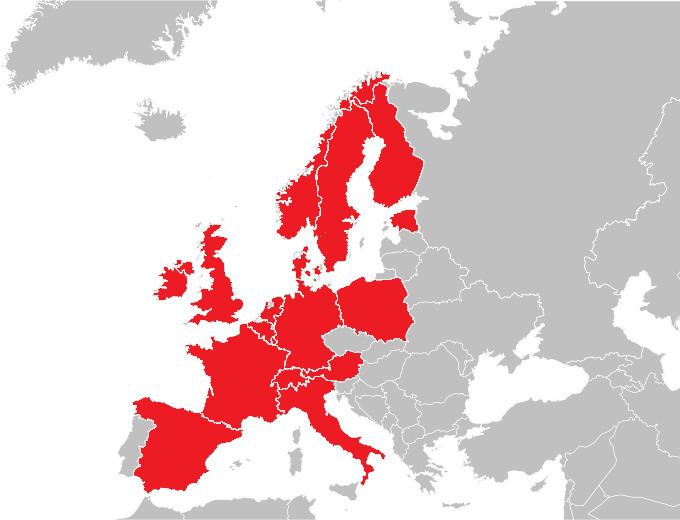 | ||
Similar Orthobunyavirus, Akabane virus, Culicoides, Bunyaviridae, Sandflies | ||
Schmallenberg virus
Schmallenberg virus is the informal name given to a recently isolated orthobunyavirus, which has not been given a formal name as of January 2013, initially reported in October 2011 to cause congenital malformations and stillbirths in cattle, sheep, goats, and possibly alpaca. It appears to be transmitted by midges (Culicoides spp.) which are likely to have been most active in causing the infection in the northern hemisphere summer and autumn of 2011, with animals subsequently giving birth from late 2011. Schmallenberg virus falls in the Simbu serogroup of Orthobunyaviruses; as of January 2013, it is considered to be most closely related to the Sathuperi and Douglas viruses.
Contents
- Schmallenberg virus
- Schmallenberg virus spread across the uk
- Molecular biology
- Signs of disease
- Diagnosis
- Cases in the United Kingdom
- Import bans
- References
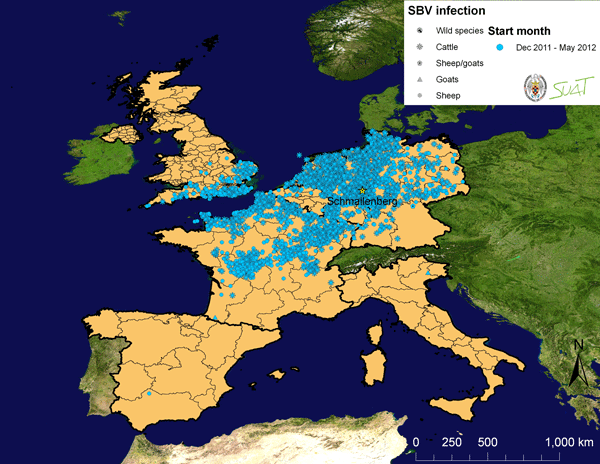
The virus is named after Schmallenberg, in North Rhine-Westphalia, Germany, from where the first definitive sample was derived. After Germany, it has also been detected in the Netherlands, Belgium, France, Luxembourg, Italy, Spain, the United Kingdom, Switzerland, Ireland, Finland, Denmark, Sweden, Austria, Norway, Poland and Estonia.
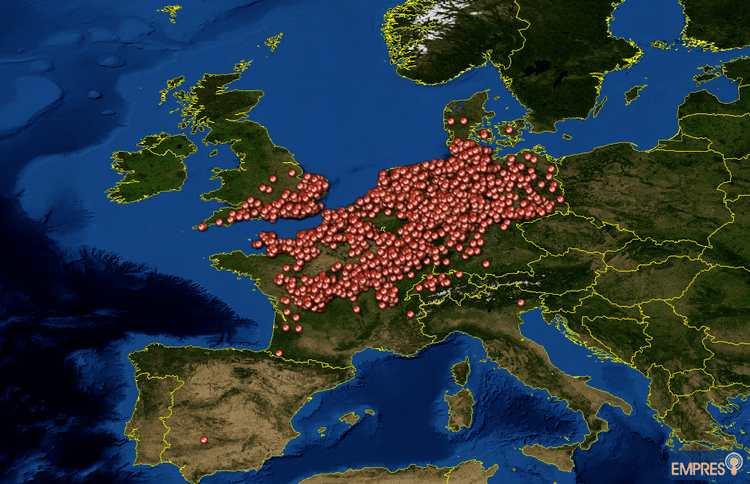
The virus has been recognised by the European Commission's Standing Committee on the Food Chain and Animal Health and the Friedrich-Loeffler-Institut (German Research Institute for Animal Health). A risk assessment in December 2011 did not consider it likely to be a threat to human health, as other comparable viruses are not zoonotic.
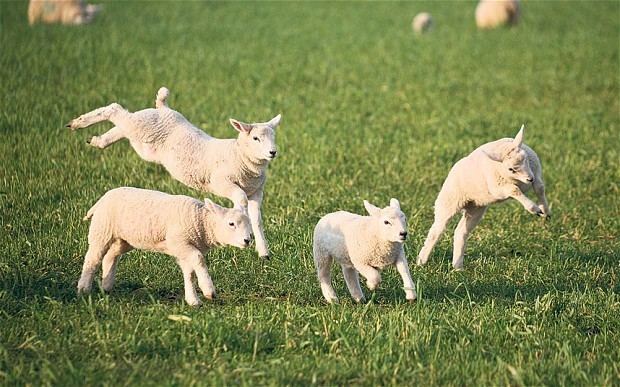
Immunity can possibly be acquired naturally against SBV. It is possible that the seasonality of the infection cycle would not entail a second epidemic circulation next year, due to the shortness of the viraemic period (about 4 to 6 days post exposure, longer in affected foetuses). Vaccination is a possible option for controlling the disease as a vaccine exists for the similar Akabane virus. In March 2012, scientists of the Friedrich-Loeffler-Institut first succeeded in producing an electron microscope image of the Schmallenberg virus.
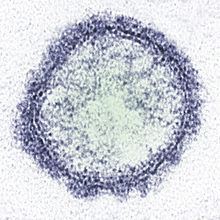
Schmallenberg virus spread across the uk
Molecular biology
The genetic structure of Schmallenberg virus is typical for Bunyaviridae viruses, which are a family of enveloped negative-sense single stranded RNA viruses with a genome split into three parts - Small (S), Middle (M) and Large (L). The L RNA segment encodes an RNA-dependent RNA polymerase (L protein), the M RNA segment encodes two surface glycoproteins (Gc and Gn) and a nonstructural protein (NSm), while the S RNA segment encodes a nucleocapsid protein (N) and, in an alternative overlapping reading frame, a second nonstructural protein (NSs). The genomic RNA segments are encapsidated by copies of the N protein in the form of ribonucleoprotein (RNP) complexes. The N protein is the most abundant protein in virus particles and infected cells and, therefore, the main target in many serological and molecular diagnostics.
Signs of disease
The virus causes two different profiles of Schmallenberg:
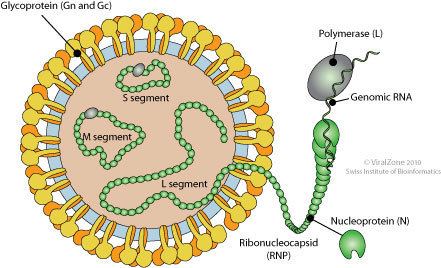
These disease signs have occurred during the period when the disease vectors (mosquitos, sandflies, midges) are active, during the summer and autumn of 2011, mainly affecting cattle.
Congenital malformations in newborn sheep, goats and calves are the most obvious symptoms. In many cases, the dam apparently has not presented signs of illness. These cases have occurred from December 2011, especially in sheep. The major malformations observed were: scoliosis, hydrocephalus, arthrogryposis, hypoplasia of the cerebellum and an enlarged thymus.
Diagnosis
Blood samples from live animals with suspicious symptoms are taken for analysis. Dead or aborted fetuses suspected of having the virus are sampled by taking a piece of the brain or spleen for analysis. The samples are tested with the RT-PCR for Schmallenberg virus that has been developed by the Friedrich-Loeffler Institute in Germany. A commercial kit is now available from AdiaVet which targets the L region of the tripartite ssRNA genome of the virus.
Cases in the United Kingdom
The disease was confirmed as present in the UK on 22 January 2012, on being formally identified in four sheep farms in Norfolk, Suffolk and East Sussex. By 27 February 2012, the disease was reported in other counties in the south of England including the Isle of Wight, Wiltshire, West Berkshire, Gloucestershire, Hampshire and Cornwall. It is likely that it was carried to Eastern England by midges from mainland Europe, a possibility previously identified as a risk by Defra.
Import bans
Russia, Ukraine, Kazakhstan, Egypt and Mexico have all suspended imports of live cattle and sheep, along with embryos and semen from affected countries.
United States ban import of bovine germplasm collected in EU countries after June 1, 2011.
